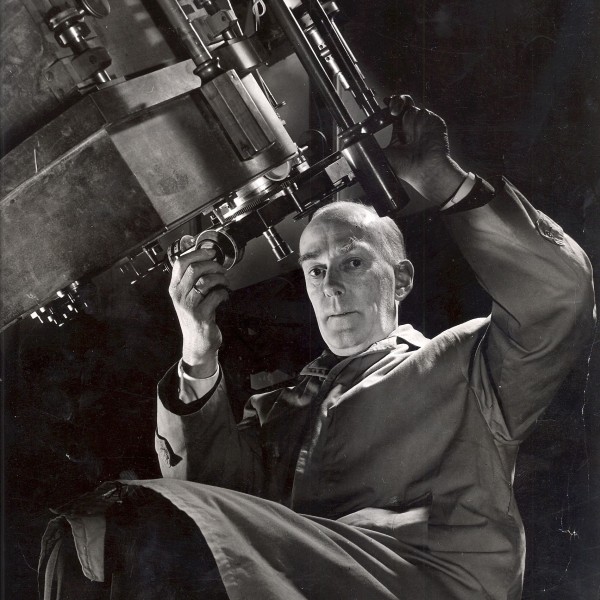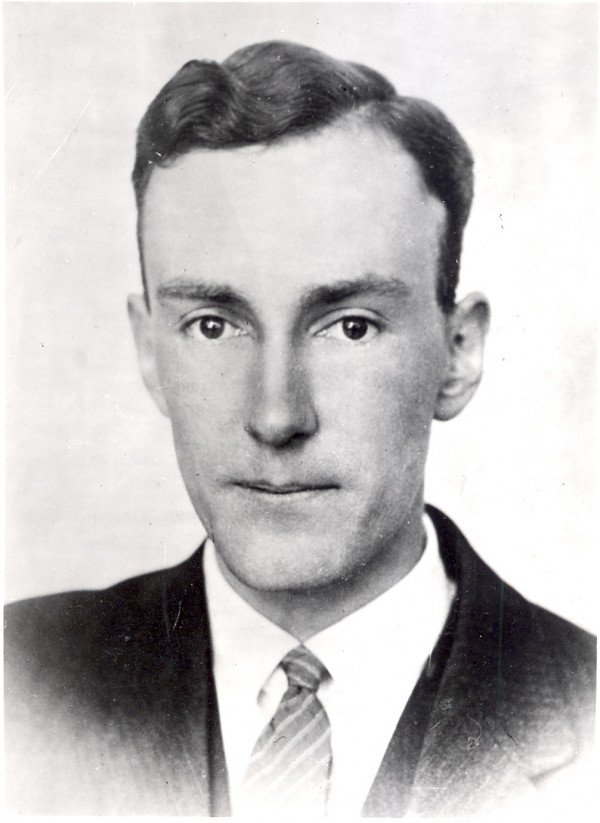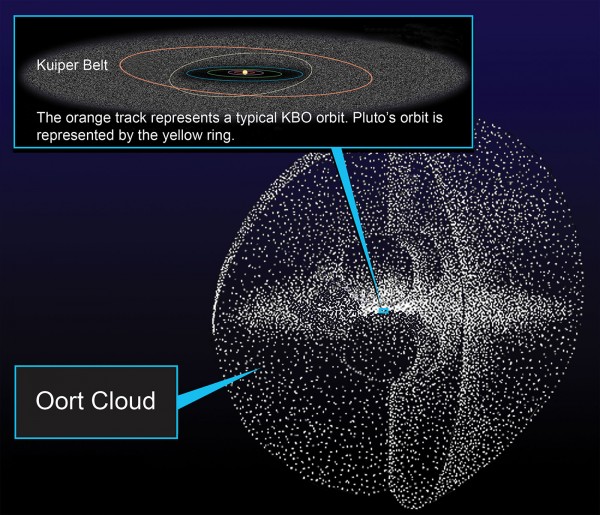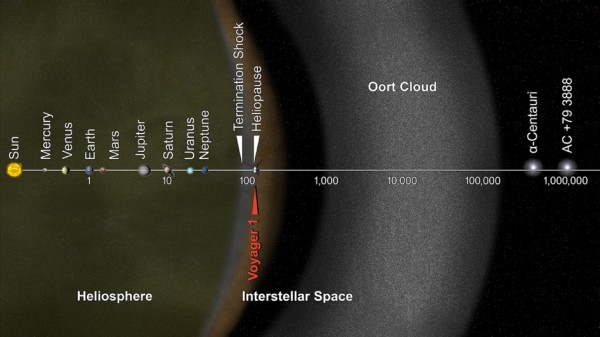
This date in science: April 28, 1900
Jan Hendrick Oort was born on this date in Franeker, Netherlands. He theorized the existence of the Oort Cloud, a vast comet cloud in the outermost reaches of our solar system. In addition, as early as 1932, he became one of the first to use the term dark matter. And, when it comes to expertise about our own galaxy, the Milky Way, few astronomers in the 20th century were more knowledgeable than Jan Oort.
Jan Oort’s schooling
Oort was born in the Netherlands and was one of five children. His father, Abraham Hendrikus Oort, was a psychiatrist. Oort’s parents always encouraged him to follow his passions, and so he decided to study physics at the University of Groningen in 1917.
Attending the lectures of astronomer Jacobus Kapteyn was a turning point for Oort. In fact, Kapteyn’s research greatly inspired him and he switched to studying astronomy.
Later, in 1924, Leiden Observatory welcomed Oort, where he began studying high-velocity stars. Two years later, he defended his doctoral thesis on that subject. This was, additionally, four years after the death of his friend and mentor, Professor Kapteyn.

Jan Oort’s early work
In 1926, astronomer Bertil Lindblad explained the stellar motion properties studied by Kapteyn to be the result of the rotation of the Milky Way. He explained it by proposing that stars closer to the center of the galaxy revolve around the galaxy’s center faster than stars farther away from the center. Subsequently, Jan Oort successfully proved and modified Lindblad’s theory in 1927 after observing the velocities of many stars.
During Oort’s studies of star motions in 1932, he noticed that many stars move faster than expected, given their location within the Milky Way. With this in mind, he then used the term dark matter – not as we use it today – but in the sense of ordinary stars that are either dim (or dark) or hidden from us behind other stars.
Read more about Fritz Zwicky, Jan Oort and dark matter here
Oort continued developing the Lindblad theory, which also came to be known as the Lindblad-Oort theory because of his contributions.
Later, Oort became a professor at the University of Leiden in 1935. Among other major accomplishments, the young professor determined that our sun is some 30,000 light-years from the center of our Milky Way galaxy. This is still the number we use today. He also calculated that the sun orbits around the center of the galaxy once every 225 million years.
In 1945, the Observatory of Leiden appointed Oort as their Director. He maintained this position until 1970.
Jan Oort and the Oort Cloud
1950 was a very important year for Oort. In this year, he proposed the theory that we recognize him for today: the theory of the Oort Cloud.
The Oort Cloud is also known as the Öpik-Oort Cloud in honor of Ernst Öpik, an Estonian astronomer who independently postulated its existence in 1932.
The theory stemmed from astronomers’ observations that there are two types of comets traveling through the inner solar system: some with relatively short periods on the order of about 200 years or less, and some with periods thousands of years long.
Oort suggested a reservoir of comets lies on the outer limits of our solar system. He said that long-period comets are sometimes knocked from their very distant orbits (perhaps by passing stars) to orbits that bring them near our sun.
If it exists, this cloud of comets – the Oort Cloud – contains material leftover from the formation of our solar system, 4 1/2 billion years ago. The comets within it lie as close as about 5,000 times up to about 100,000 times the Earth-sun distance, a distance of up to 93 trillion miles (150 trillion km) away.
The Oort Cloud of comets is not an observed fact. It’s still a theory. But it’s a well-accepted theory by astronomers that has stood the test of time, and it’s thought to explain the origin of long-period comets such as Comet Hale-Bopp.

Oort solves the comet puzzle
Prior to Oort’s work on the Oort Cloud, astronomers wondered for hundreds of years (or thousands of years, if you count history’s earliest watchers of the skies) where the comets they observe originated. Astronomers in the 20th century knew that comets collide with other celestial bodies. They knew comets vaporize when they pass too near the sun, and sometimes the close encounter ejects them from our solar system. And yet there are always new comets coming to our part of the solar system.
The Oort Cloud answers this paradox of comets that seem to appear out of nowhere.

Oort died in 1992, at 92 years old. But his contributions to astronomy live on.

Bottom line: Dutch astronomer Jan Oort was born on April 28, 1900. He visualized a vast reservoir of icy comets on the outskirts of our solar system, which now bears his name.











